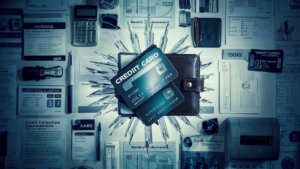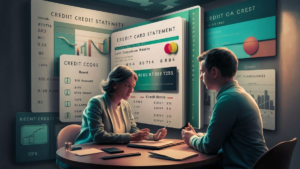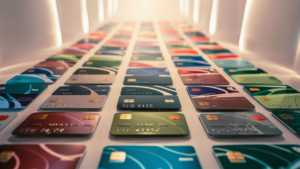In the realm of personal finance, understanding how to calculate the minimum payment on your credit card is paramount to maintaining healthy financial habits and avoiding unnecessary debt. A credit card’s minimum payment is the smallest amount you’re required to pay each month to keep your account in good standing. Failing to make at least the minimum payment can result in late fees, increased interest rates, and damage to your credit score.
What Factors Determine the Minimum Payment?
The minimum payment on a credit card is typically calculated as a percentage of your outstanding balance, with a minimum dollar amount specified by the card issuer. The specific formula used to calculate the minimum payment can vary between credit card companies, but it often includes elements such as:
- The outstanding balance on the card
- The annual percentage rate (APR) of the card
- A fixed minimum payment amount
Understanding how these factors interact can help you better manage your credit card payments and avoid excessive debt accumulation.
How to Calculate the Minimum Payment
While the exact method for calculating the minimum payment may differ between credit card issuers, it typically involves one of the following approaches:
Percentage of Outstanding Balance
Many credit card companies calculate the minimum payment as a percentage of the outstanding balance on the card. This percentage can vary but is commonly around 1-3% of the balance.
Fixed Dollar Amount
Some credit card issuers set a fixed dollar amount as the minimum payment, regardless of the outstanding balance. This fixed amount is typically specified in the cardholder agreement.
Combination of Percentage and Fixed Amount
In some cases, credit card companies may use a combination of a percentage of the outstanding balance and a fixed dollar amount to calculate the minimum payment. For example, they may require a minimum payment of 2% of the outstanding balance or $25, whichever is greater.
Why Paying Only the Minimum Is Risky
While making the minimum payment can help you avoid late fees and maintain your credit card account in good standing, it’s important to recognize the potential drawbacks of only paying the minimum:
- Interest Accumulation: By only paying the minimum, you’ll likely accrue interest on the remaining balance, leading to increased overall debt.
- Extended Repayment Period: Paying only the minimum extends the time it takes to pay off your balance, potentially keeping you in debt for years.
- Impact on Credit Score: Carrying a high balance relative to your credit limit, known as high credit utilization, can negatively impact your credit score.
Strategies for Paying More Than the Minimum
To avoid the pitfalls of only paying the minimum on your credit card, consider implementing the following strategies:
- Pay More Than the Minimum: Whenever possible, pay more than the minimum payment to reduce your balance faster and minimize interest charges.
- Create a Budget: Develop a budget that prioritizes paying off debt, allocating as much money as possible towards credit card payments.
- Use Windfalls Wisely: Apply unexpected income, such as bonuses or tax refunds, towards paying down your credit card balance.
- Consider Balance Transfers or Debt Consolidation: Explore options such as balance transfers or debt consolidation loans to reduce interest rates and simplify repayment.
By understanding how to calculate the minimum payment on your credit card and implementing strategies to pay more than the minimum, you can take control of your finances and work towards a debt-free future.
equently Asked Questions
What is the impact of making only the minimum payment on a credit card?
Making only the minimum payment on a credit card can have several negative consequences. Firstly, it can lead to increased overall debt due to accumulating interest on the remaining balance. Additionally, paying only the minimum extends the repayment period, potentially keeping you in debt for a longer time. Moreover, it can negatively impact your credit score, especially if you have a high balance relative to your credit limit, which is known as high credit utilization.
Are there any strategies to pay off credit card debt more effectively?
Yes, several strategies can help you pay off credit card debt more effectively. One approach is to pay more than the minimum payment whenever possible. This helps reduce your balance faster and minimizes interest charges. Creating a budget that prioritizes debt repayment and allocating as much money as possible towards credit card payments can also be beneficial. Additionally, using unexpected income, such as bonuses or tax refunds, towards paying down your credit card balance can accelerate debt reduction. Exploring options like balance transfers or debt consolidation loans to reduce interest rates and simplify repayment can also be effective strategies.
| Payment Strategy | Advantages | Considerations |
|---|---|---|
| Pay more than the minimum | Reduces balance faster, minimizes interest charges | Requires higher monthly payments |
| Create a budget | Prioritizes debt repayment, allocates funds efficiently | Requires discipline to stick to the budget |
| Use windfalls wisely | Accelerates debt reduction without impacting regular income | Income may be irregular or unpredictable |
| Consider balance transfers or debt consolidation | Reduces interest rates, simplifies repayment | May involve fees or eligibility requirements |
What are some potential drawbacks of paying only the minimum on a credit card?
Some potential drawbacks of paying only the minimum on a credit card include:
- Accumulation of interest on the remaining balance
- Extended repayment period, keeping you in debt for longer
- Negative impact on credit score, especially with high credit utilization
How does credit utilization affect my credit score?
Credit utilization, which refers to the amount of credit you’re using compared to your total available credit, is an important factor in calculating your credit score. High credit utilization, where you’re using a significant portion of your available credit, can negatively impact your credit score. It’s generally recommended to keep your credit utilization ratio below 30% to maintain a good credit score.
See also:






